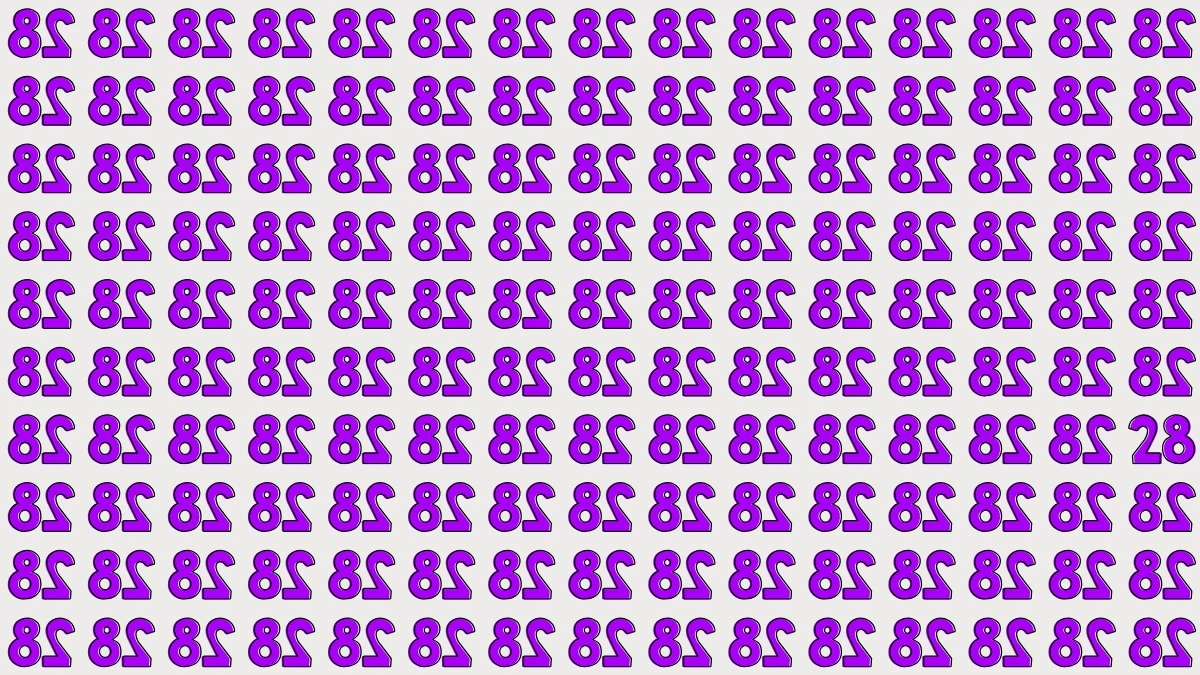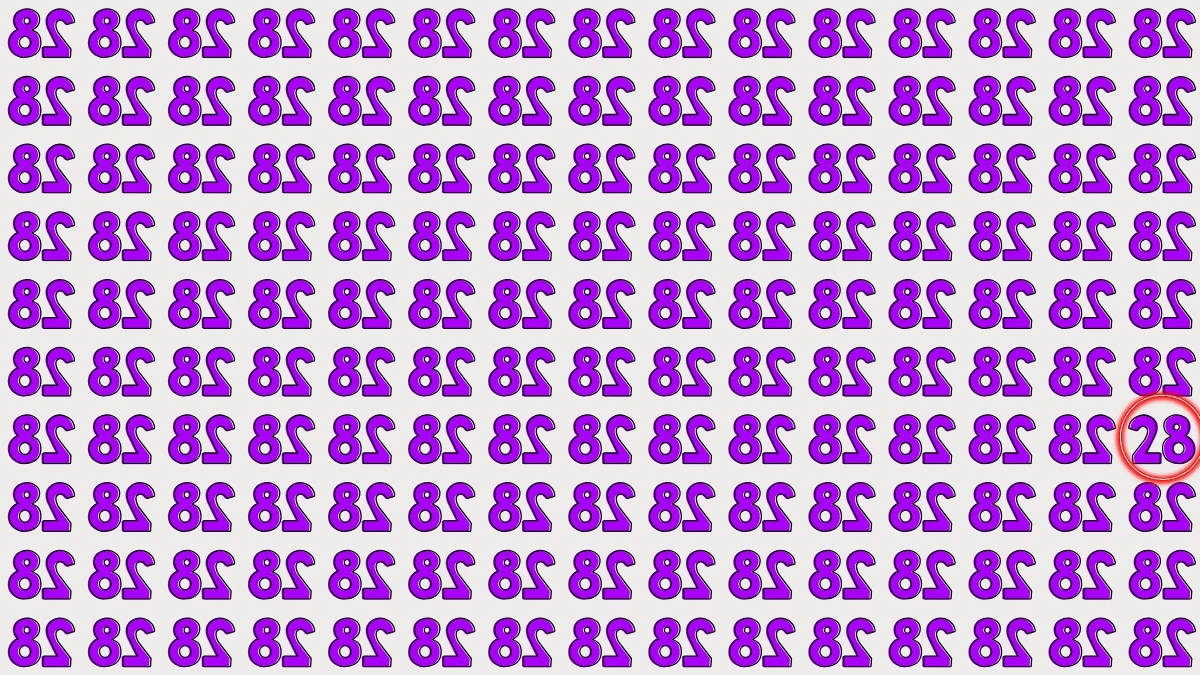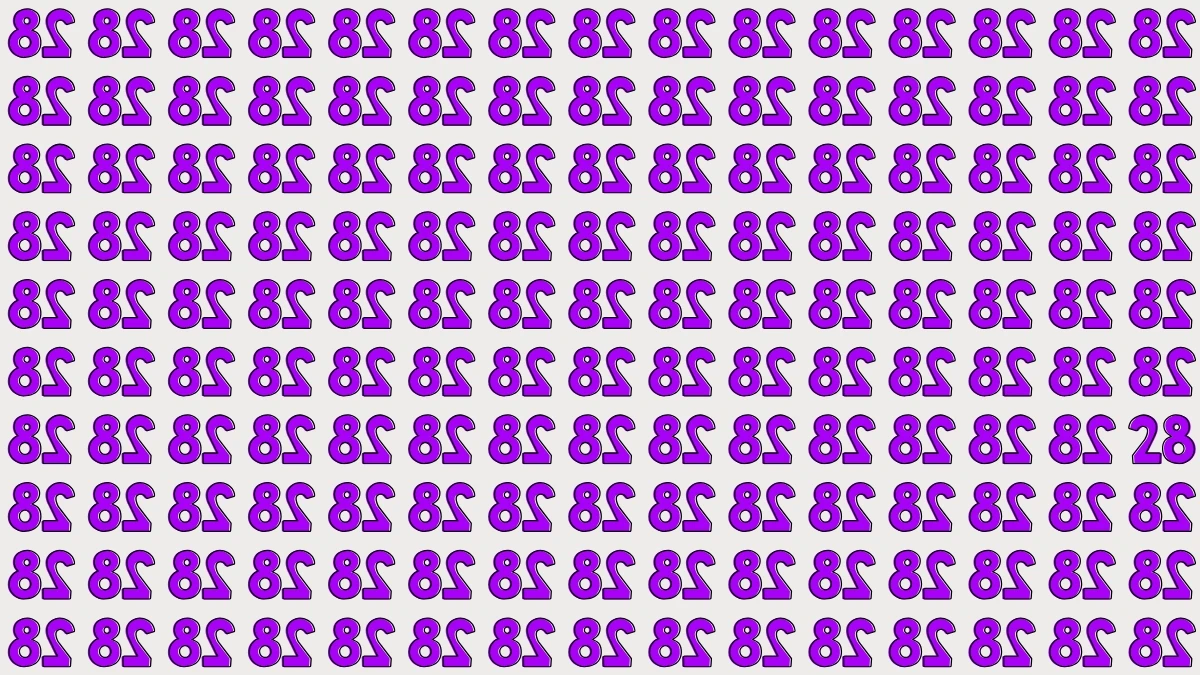Are you ready to test your visual sharpness and attention to detail? Optical illusions have long fascinated people by tricking our brains and challenging how we perceive the world around us. Today, we bring you a quick and fun challenge: can you spot the number 28 hidden among a sea of inverted 28s — and do it in under 5 seconds?
Optical illusions play with patterns, shapes, and contrasts to confuse our perception. When numbers or letters are repeated but slightly altered, our brains tend to "autocorrect" or overlook the subtle difference. This challenge forces you to slow down and engage your eagle eyes to find the odd one out.
Optical Illusion: Within 5 Seconds Spot The Number 28 among Inverted 28
This optical illusion challenges you to find the number "28" hidden among numerous inverted versions of the same number. The trick lies in the fact that all the numbers look almost identical except for their orientation, which makes spotting the correctly oriented "28" quite difficult at a quick glance.
The brain tends to process patterns and familiar shapes rapidly, but when those shapes are flipped or rotated, it slows down recognition, causing the eyes to scan more carefully. This illusion tests your visual perception and attention to detail, encouraging you to slow down and differentiate subtle differences in orientation within a crowded field of similar figures.
Spotting the normal "28" among the inverted ones sharpens focus and highlights how easily our brain can be tricked by simple changes in perspective.

Optical Illusion: Within 5 Seconds Spot The Number 28 among Inverted 28 - Solution
In this optical illusion image, the majority of the numbers "28" are inverted, making them appear upside down. However, the challenge is to spot the single instance of the number "28" that is not inverted, which means it is oriented correctly, facing the right way.
This correctly oriented "28" stands out subtly against the sea of inverted numbers. In the image, this correctly oriented number "28" is located near the bottom right corner and is highlighted with a red circle. It is the only one that breaks the uniform pattern, which makes it identifiable once you focus carefully. This kind of visual puzzle plays on our brain’s tendency to notice patterns and then detect anomalies within them.







